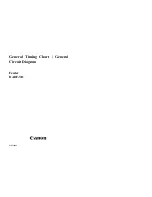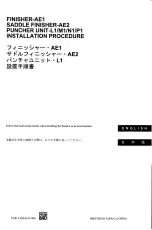
LORENZ MESSTECHNIK GmbH
Obere Schloßstr.131
73553 Alfdorf
07172 / 93730-0
Fax 07172 /93730-22
E-Mail: [email protected]
Technical changes reserved
090327.docx
Internet:
www.lorenz-sensors.com
Page 11 of 12
7.2
Trouble Shooting
This chart should help to search for the most frequent errors and their elimination
Problem
Possible Cause
Trouble Shooting
No signal
No sensor excitation
Outside of permissible range
Connect excitation
Cable defect
No mains supply
Signal output connected wrong
Connect output correctly
Evaluation electronics defect
Sensor does not react to torque
Shaft not clamped
Clamp correctly
No power supply
Outside of permissible range
Connect supply
Cable defect
No mains supply
Cable defect
Repair cable
Connector connected wrong
Connect correctly
Signal has dropouts
Axial position rotor to stator
outside of tolerance
Align rotor
Cable defect
Repair cable
Zero point outside of tolerance
Cable defect
Repair cable
Shaft mounted distorted
Mount correctly
Distorted shaft string
Release from distortion
Strong lateral forces
Reduce lateral forces
Distorted flanges
Check evenness of flange-
surfaces
Shaft overloaded
Send to manufacturer
Wrong torque indication
Calibration not correct
Re-calibrate
Sensor defect
Repair by manufacturer
Torque shunt
Eliminate shunt
Oscillations
Alignment of shaft not correct
Align correctly
Unbalance
Balance the corresponding
parts
8
Decommission
All sensors must be dismantled professionally. Do not strike sensor housings with tools. Do not apply
bending moments on the sensor, e.g. through levers. The torque sensor must be supported to avoid
falling down during the dismantling.
9
Transportation and Storage
The transportation of the sensors must occur in suitable packing.
For smaller sensors, stable cartons which are well padded are sufficient (e.g., air cushion film, epoxy
crisps, paper shavings). The sensor should be tidily packed into film so that no packing material can
reach into the sensor (ball bearings).
Larger sensors should be packed in cases.
9.1
Transportation
Only release well packed sensors for transportation. The sensor should not be able to move back and
forth in the packing. The sensors must be protected from moisture.
Only use suitable means of transportation.
9.2
Storage
The storage of the sensors must occur in dry, dust-free rooms, only.
Slightly lubricate shafts and flanges with oil before storing (rust).






























